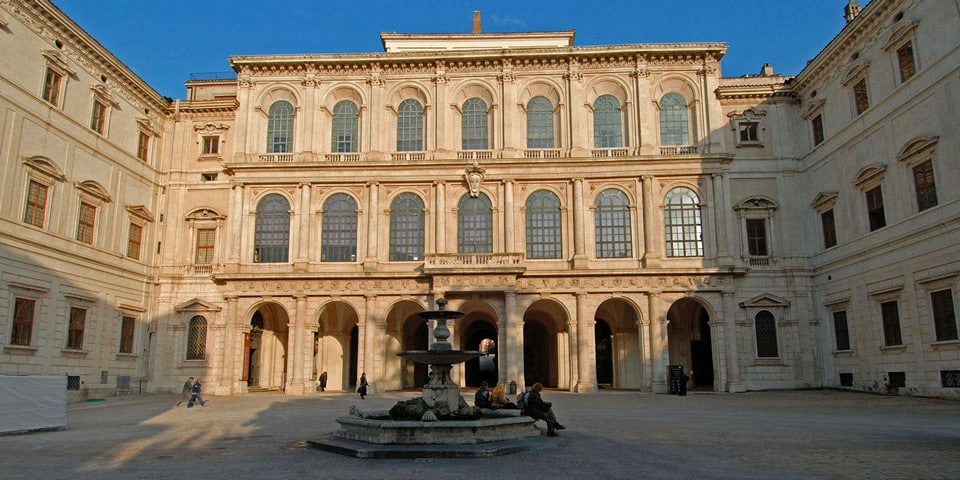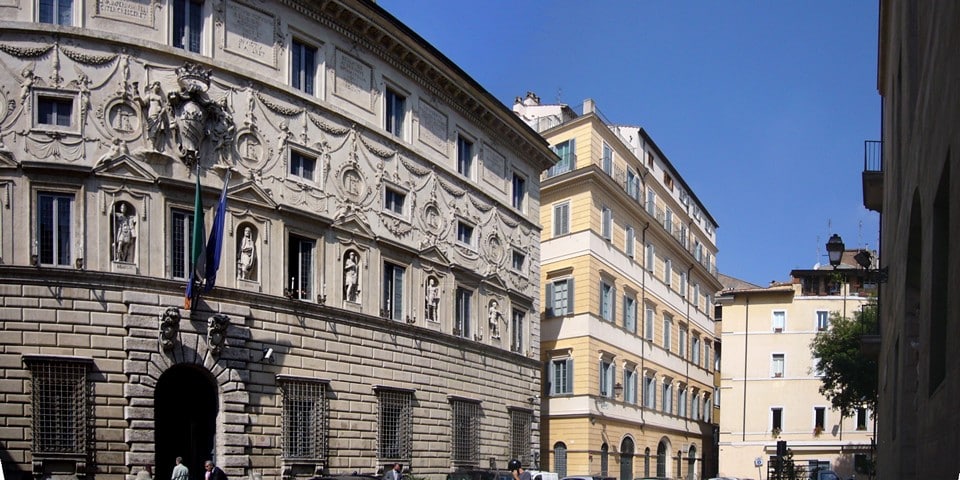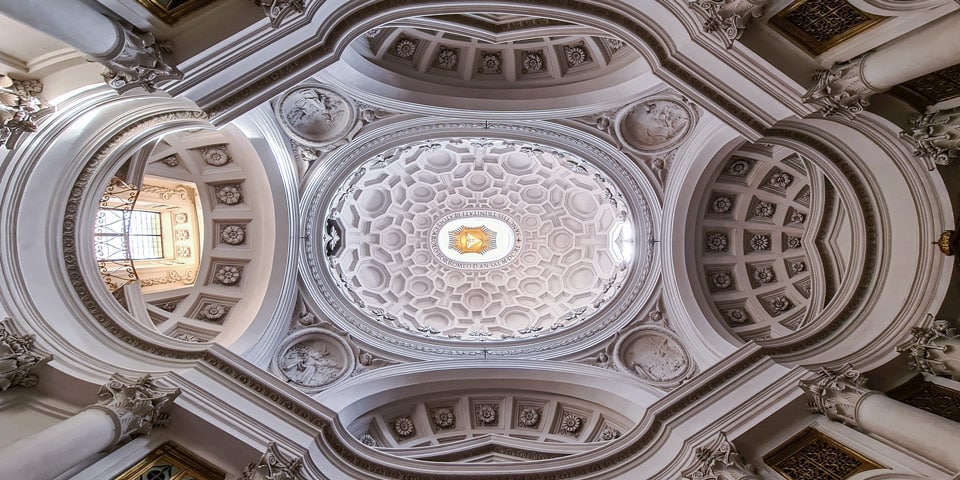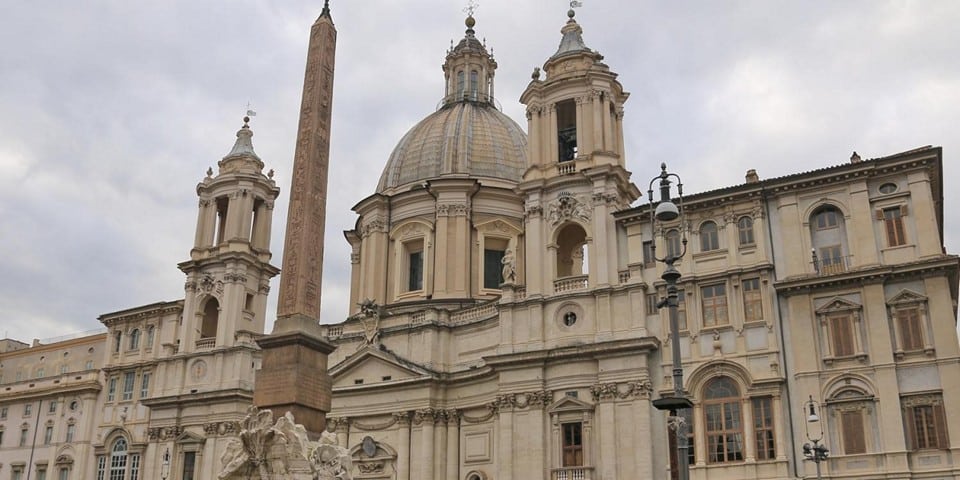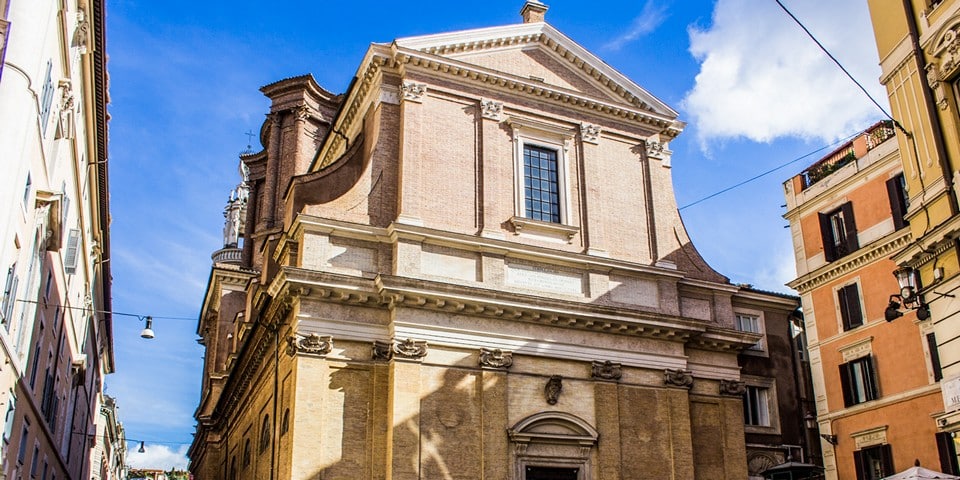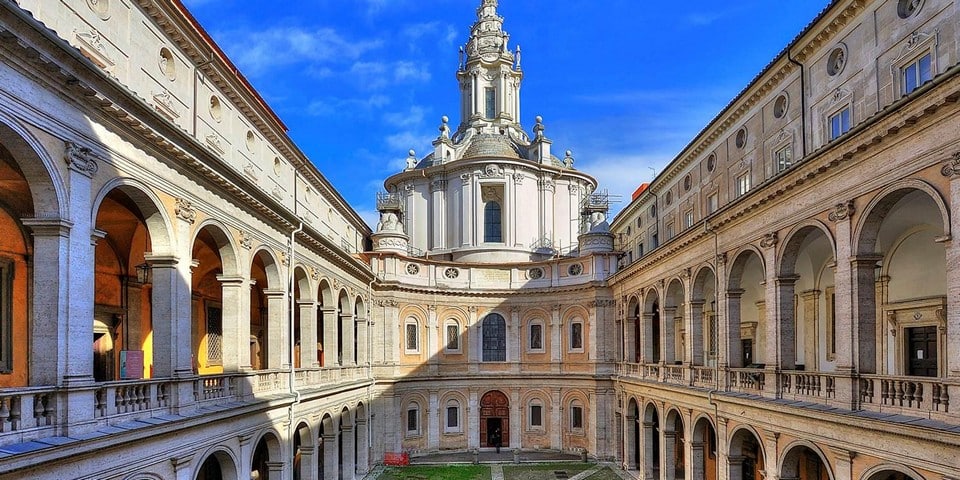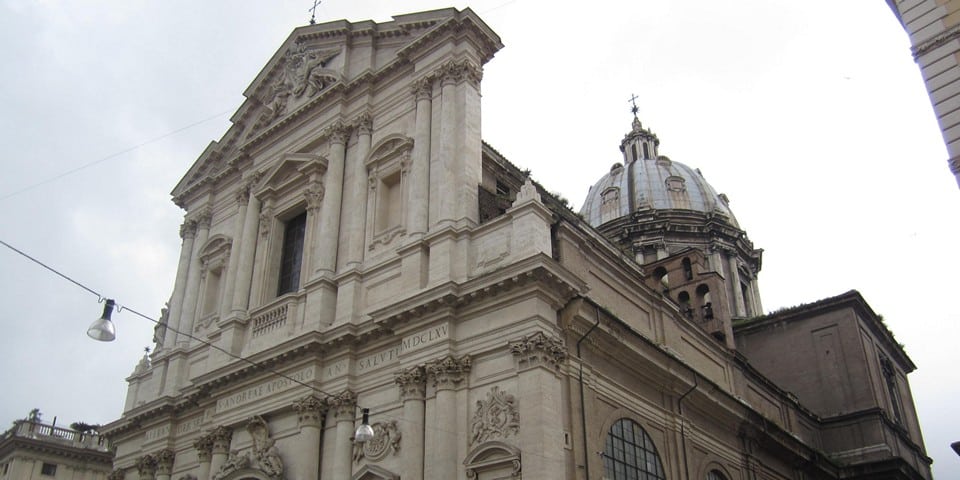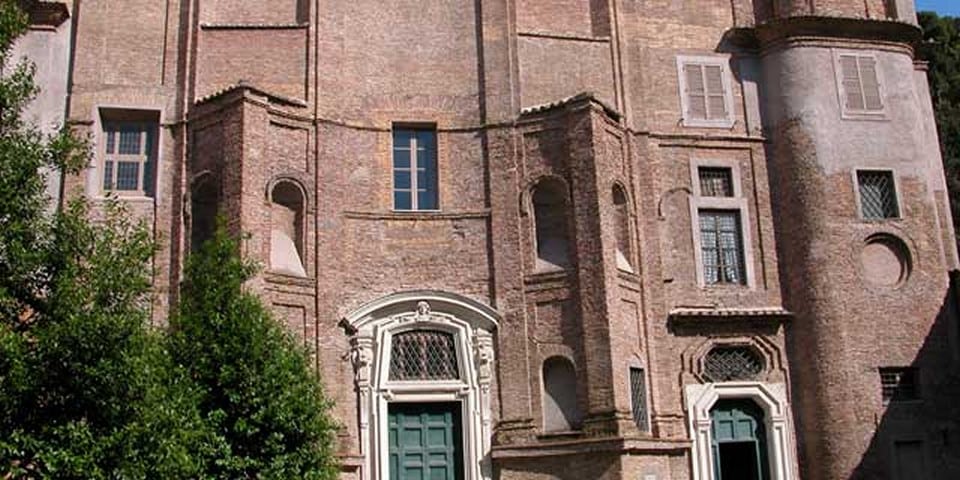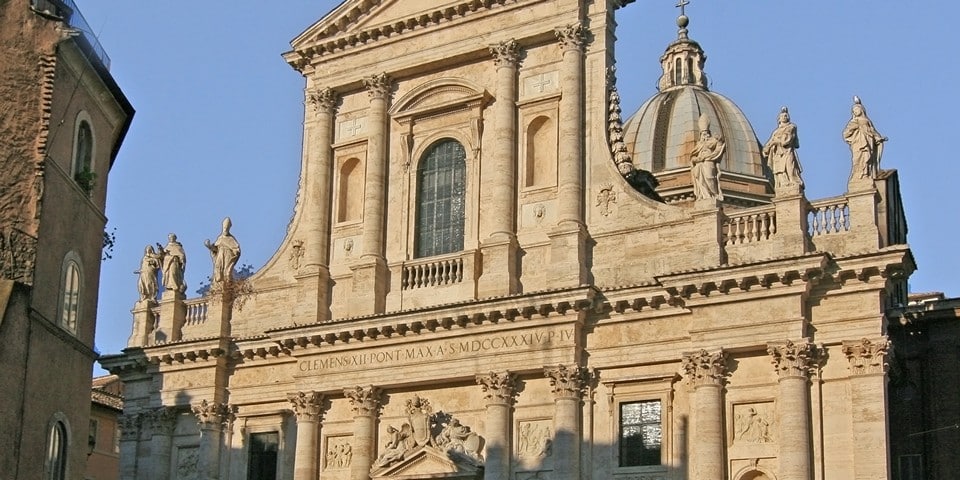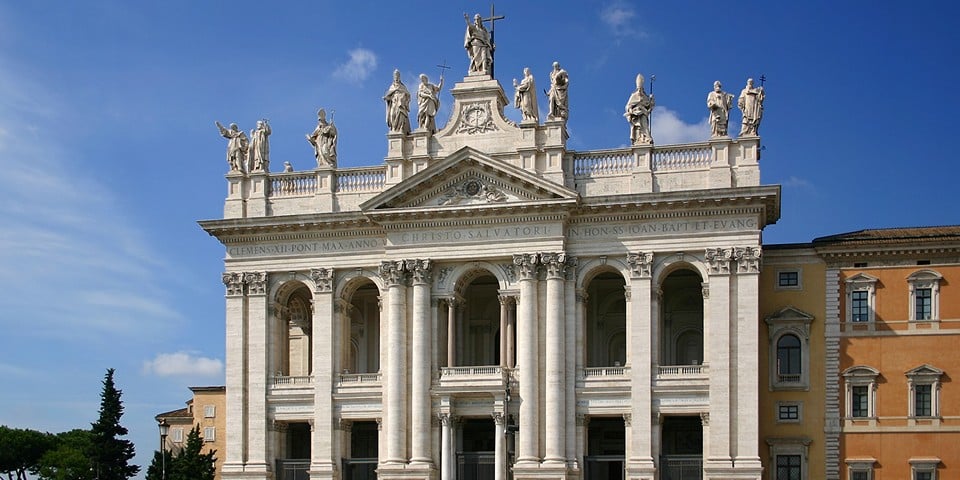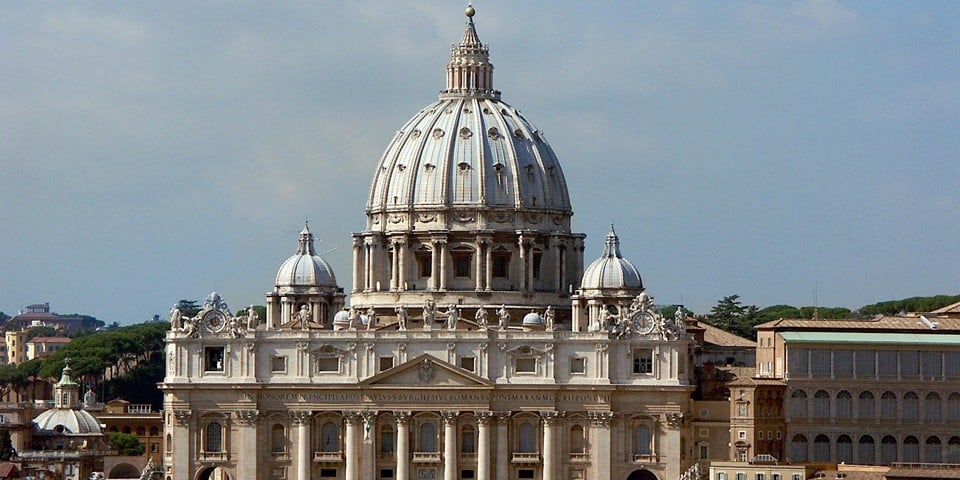Francesco Borromini was an expressive and irrational Baroque Italian architect. A great master of spatial building solutions, the author of several buildings and many interior decorations.
Page Contents
Biography
Francesco was born on September 25, 1599 in Ticino, an Italian-speaking canton in southern Switzerland. His real name was Castelli. Deciding to become a stonemason, Francesco continued his father’s work. As a young boy he became an apprentice stone carver in Lombardia. Then he goes to Milan to learn the craft, and at twenty he is already working in Rome, under the supervision of a relative Carlo Maderno. At this time Maderno was in charge of the construction of St. Peter’s Basilica (Sancti Petri) in the Vatican (Stato della Città del Vaticano) and Palazzo Barberini, he was able to place the young man in a well-paid position.
The architect’s style was influenced by Michelangelo and Andrea Palladio, and Borromini’s trademark was the use of ovals instead of circles, complemented by undulating architectural compositions. He preferred to work with small forms, not aspiring to large urban projects.
His favorite materials were brick, stone, plaster and plaster. At the same time Borromini preferred to break lines, create subtle decorative patterns and illuminate works with dim light.
Bernini vs Borromini
Francesco Borromini’s main rival throughout his life was Giovanni Bernini, who was constantly patronized by many Vatican monarchs.
Bernini was able to show his worth in architecture, painting, sculpture, mechanics and playwriting (although almost nothing has survived). Borromini remained only an architect, but technically he was always more competent and far-sighted than his rival.
- Recommended sightseeing tour: Renaissance Rome
Bernini worked with ease and ease, easily obtaining the most important commissions from the church. Borromini had to achieve everything by hard work, repeatedly listening to harsh criticism of the extravagant style of his work. Some common works of the two architects brought fame only to Bernini (such as the canopy in St. Peter’s Cathedral), with the name of the second author not being mentioned.
Borromini was angry with his rival, never missing an opportunity to humiliate and insult him. When he learned of Giovanni’s mistakes in the construction of buildings and structures, Francesco was in no hurry to tell anyone about it. He was waiting for the right moment to enjoy his victory by destroying Bernini at the right time.
This was the case with the Pantheon when Giovanni built two bell towers resembling donkey ears. Or during the construction of the Fountain of the Four Rivers (Fontana dei Quattro Fiumi) when Bernini made a mistake in his calculations, but was able to correct it himself in time without giving Borromini cause for rejoicing.
Death
Some time before the completion of the San Carlo alle Quattro Fontane, Borromini suffered a severe depression that caused him to destroy all new designs for future structures. He then committed suicide on August 8, 1667.
The architect is buried in the church of San Giovanni dei Fiorentini. His tomb is not decorated with a baldachin, monument or altar; only Borromini’s name is embossed on the tombstone.
Personal life
About Francesco Borromini’s family and children history knows nothing, perhaps they simply did not exist. Being a pious man and choosing to serve God through the embodiment of his talent as an architect in the construction of churches and temples, he sacrificed his own family happiness. There were several pupils to whom the master passed on his knowledge, but in his personal life Borromini remained lonely.
Works in palaces
Borromini’s penchant for fanciful architectural detail began to show from his early days working on large papal and significant commissions. The painstaking attention to detail, together with the dizzying layout, perfectly reflected the artist’s skill. Elegant, stately palaces with open courtyards occupy a place of honor in Baroque architecture.
Palazzo Barberini
Palazzo Barberini stands on Via delle Quattro Fontane in the east of Rome. Today it houses the Galleria Nazionale d’Arte Antica. Here Borromini first met his future rival Bernini.
The building began in 1627, designed by Maderno and commissioned by Pope Urbanus PP. VIII. After the death of Maderno, Bernini took charge of the work and finished it in 1633. Borromini designed the spiral staircase, the rear façade, the double columns and windows.
Spada Gallery
The Palazzo Spada is the Roman palace of Cardinal Bernardino Spada, which was built at the beginning of the 16th century on Piazza Capo Di Ferro in the historic center of Rome.
Spada bought the building in 1632 from Cardinal Pietro Paolo Mignanelli and immediately started the reconstruction, entrusting the works to Borromini. The famous Galleria Spada is a gallery 9 meters long, running through a low garden enclosure to a statue of Mercury (60 centimeters high) in a small garden. The architect tilted the floor and installed columns and arches along the room, gradually reducing its size. The optical effect lengthens the corridor four times and triples the size of the statue.
Palazzo Pamphili
The facade of the Palazzo Pamphilj looks out over Piazza Navona. The building was designed by Girolamo Rainaldi and built from 1644 to 1650 for Pope Innocentius PP X. Borromini was invited to make adjustments to the layout of the palace.
He designed the main hall with stucco decorations and redecorated the first floor gallery with frescoes by Pietro da Cortona. The oval staircases were also the work of Borromini.
Palazzo Propaganda Fide
The Palazzo di Propaganda Fide is located in the center of Rome, on Piazza di Spagna, on Via Frattina, and belongs to the Holy See.
Originally belonged to the Jesuit order, there were trained missionaries who converted pagans to Christians. In 1627 Bernini reconstructed the façade and after the death of Pope Urban VIII the work was continued by Borromini. Today the building houses the museum of the missionary Congregation for the Evangelization of Peoples (Congregatio pro Gentium Evangelizatione).
Palazzo Carpegna
The Palazzo Carpegna in Piazza dell’Accademia di San Luca has housed the Galleria dell’Accademia di San Luca since 1932.
The staircase and the main portal were made by Borromini and the space of the room was considerably enlarged.
Churches
The designs of Borromini’s cathedrals and basilicas are distinguished by their originality. Both the general compositions and the individual elements of the decoration bear in themselves the strict individuality of the author, often not accepted and criticized by his contemporaries.
San Carlo alle Cuatro Fontane
The name of the small Franciscan basilica “San Carlo alle Quattro Fontane” translates to the church of “St. Carlo by 4 Fountains”.
The temple in white was built according to sketches by Borromini from 1638 to 1677 and was a striking example of Baroque curvilinearity. The presence of four fountains at the crossing of the streets Delle Quattro Fontane and Del Quirinale is reflected in the name of the church. The Order of the Holy Trinity (Ordo Sanctissimae Trinitatis) commissioned the construction of the work.
The building with cut corners and wavy eaves was intended as a place of burial for the author of the project, there he was allotted a chapel on the left, which never became the grave of the talented Italian.
San Agnese in Agone
The church “Sant’Agnese in Agone” (“Basilica of St. Agnes”) is built on Piazza Navona.
It was begun in 1651 by Girolamo Rainaldi, commissioned by Pope Innocentius PP X, Borromini worked on the project from 1652 to 1655, the construction was completed in 1672. When she was 12 years old, she took a vow of celibacy, and all men who approached her with evil thoughts, were deprived of their masculine power. Four altars are erected in the center of the 8-cornered cathedral; the right transept contains the martyr’s skull.
Basilica of Sant’Andrea delle Fratte
The Basilica of Sant’Andrea delle Fratte is built in honour of the Great Martyr Andrea and was erected on Via di Sant’Andrea delle Fratte.
The temple functions since the XII century as the national church of the Scots, subsequently it was many times reconstructed. In 1585 Pope Sixtus V (Sixtus PP. V) gave it to the monastic order of the Minims (Ordo Minimorum). Borromini worked on the building from 1653 until his death. His designs reconstructed the dancing bell tower, the church dome and the adjacent semi-circular ledge of the building. Artists Angelica Kauffmann and Orest Kiprensky and sculptor Rudolf Schadow are buried here.
Sant’Ivo alla Sapienza
The Catholic church “Sant’Ivo alla Sapienza” was erected in honor of St. Ivo of Breton. The building is the pinnacle of Borromini’s craftsmanship. It is located in the central area of Rome on Corso del Rinascimento, a hundred meters from Navona.
It was commissioned by Pope Urban VIII. The architect was asked to build the church between the two university buildings. He designed a hexagonal structure with a concave facade and a spiral dome, fitting all this splendor seamlessly into the small space. The construction of the university church went on from 1642 to 1662.
Oratory of Filippo Neri
The oratory of the Filipino monks was to include the chapel of Filippo Neri, a room for the storage of the vestments and church utensils, the cells, the monastic dining room and the reading room. It is designed adjacent to the New Church (Chiesa Nuova) in the most intimate street in the city, del Governo Vecchio.
Borromini combined the architecture of Roman palaces with ecclesiastical themes by constructing a figured arch of the upper pediment, pilasters, and an interesting interchange of pediments and windows.
The concave brick masonry façade and the two-component enclosures on the sides are meant to represent the welcoming arms of the church.
Sant’Andrea della Valle
The Church of Sant’Andrea della Valle, the largest church Borromini worked on, was built by various masters and architects between 1590 and 1650.
It is located in Piazza Vidoni, at the intersection of Corso Vittorio Emmanuele and Corso del Rinascimento. In 1622 Borromini, under the direction of Maderno, worked on the construction of the church dome.
Santa Maria dei Sette Dolori
The church of Santa Maria dei Sette Dolori, founded by Camilla Farnese, Duchess of Latera, was built on Via Garibaldi in the thirteenth district of Rome.
Construction started in 1642, but stopped in 1655 because of a lack of funds. The temple has a rectangular form with rounded corners, as conceived by Borromini. The exterior facade is made of brick, the interior is not very richly decorated, although it is decorated with marble sculptures and canvases by Marco Benefial.
San Giovanni dei Fiorentini
The Church of San Giovanni dei Fiorentini is on Rome’s Via Giulia and was originally built for the Florentine community in Rome.
It was built over 100 years, since 1509, the first architect was Antonio da Sangallo. In 1620. Carlo Maderno designed the domes and Borromini built the majestic altar. Both architects were honored to be buried in this basilica for their services to ecclesiastical construction. It is the only church in the world where dogs and cats are allowed.
Church of Santa Lucia in Selci
The Church of Saint Lucia in Selci (Chiesa di Santa Lucia in Selci) is a hidden church on the Roman Esquilinus Hill (Mons Esquilinus).
The church was built at the beginning of the VI century by Pope Symmachus PP, from 1534 belonged to the Ordo Sancti Benedicti, from 1568 it was taken over by the Ordinis Sancti Augustine. In 1604 Carlo Maderno took part in the reconstruction of the church, and from 1637 to 1638 Francesco Borromini led the work. He replaced the main altar, decorated the first Lundy Chapel on the left, and the choir.
San Giovanni In Oleo Chapel
The Chapel of San Giovanni in Oleo (Oratorio San Giovanni in Oleo) in the octagonal chapel, according to legend, was built where John the Baptist emerged alive from a fire of hot oil. It is in Via Porta Latina (di Porta Latina).
Borromini, involved in the remodeling of the church, changed its interior by decorating it with a terracotta relief frieze depicting roses and palm sprigs. He also installed a cross on the roof of the chapel.
Basilica of San Giovanni in Laterano
The Basilica of St. John the Baptist on Laterano is more important than any other church in the world (St. Peter’s Basilica among them), because it is near the Laterano Palace, the seat of the bishops of Rome from the 4th century to the 14th century.
From 1650 until his death, Borromini was in charge of restoring the temple. He reconstructed the bronze doors of the Curia Iulia and designed the niches of the main aisle. Along the walls are statues of saints and prophets, designed by the architect.
Works at the Vatican
Borromini was not as much a favorite of the papal court as Bernini, but his works can also be found in the Vatican. The architect’s undeniable talent was ahead of his time and contemporaries noticed and noted his ability to beautifully execute complex commissions, especially when it came to limited space.
- I suggest a tour: the Vatican at dawn
St. Peter’s Cathedral
St. Peter’s Cathedral (Basilica di San Pietro) is the ceremonial center of the Roman Catholic Church, created by several generations of distinguished architects.
The official founding date is 1626. Borromini, together with Bernini, designed the canopy over the burial place of St. Peter, but the laurels go to Bernini alone. Borromini also built the pedestal for the Pieta Michelangelo and sketched the bronze grille for the Cappella Santissimo Sacramento and the gates of the Cappella del Coro, which have not survived to this day.
 Italy for me From Italy with love
Italy for me From Italy with love


